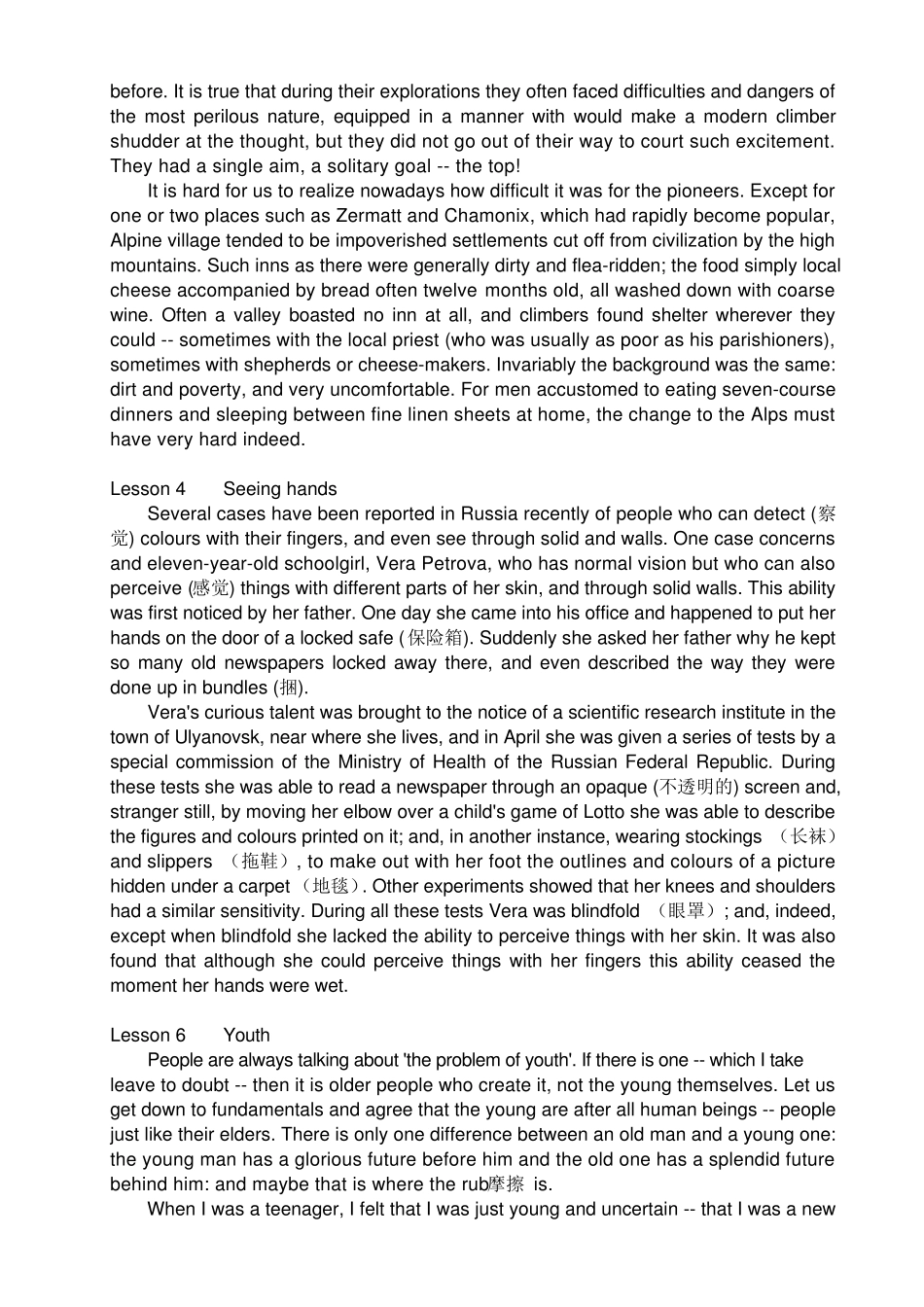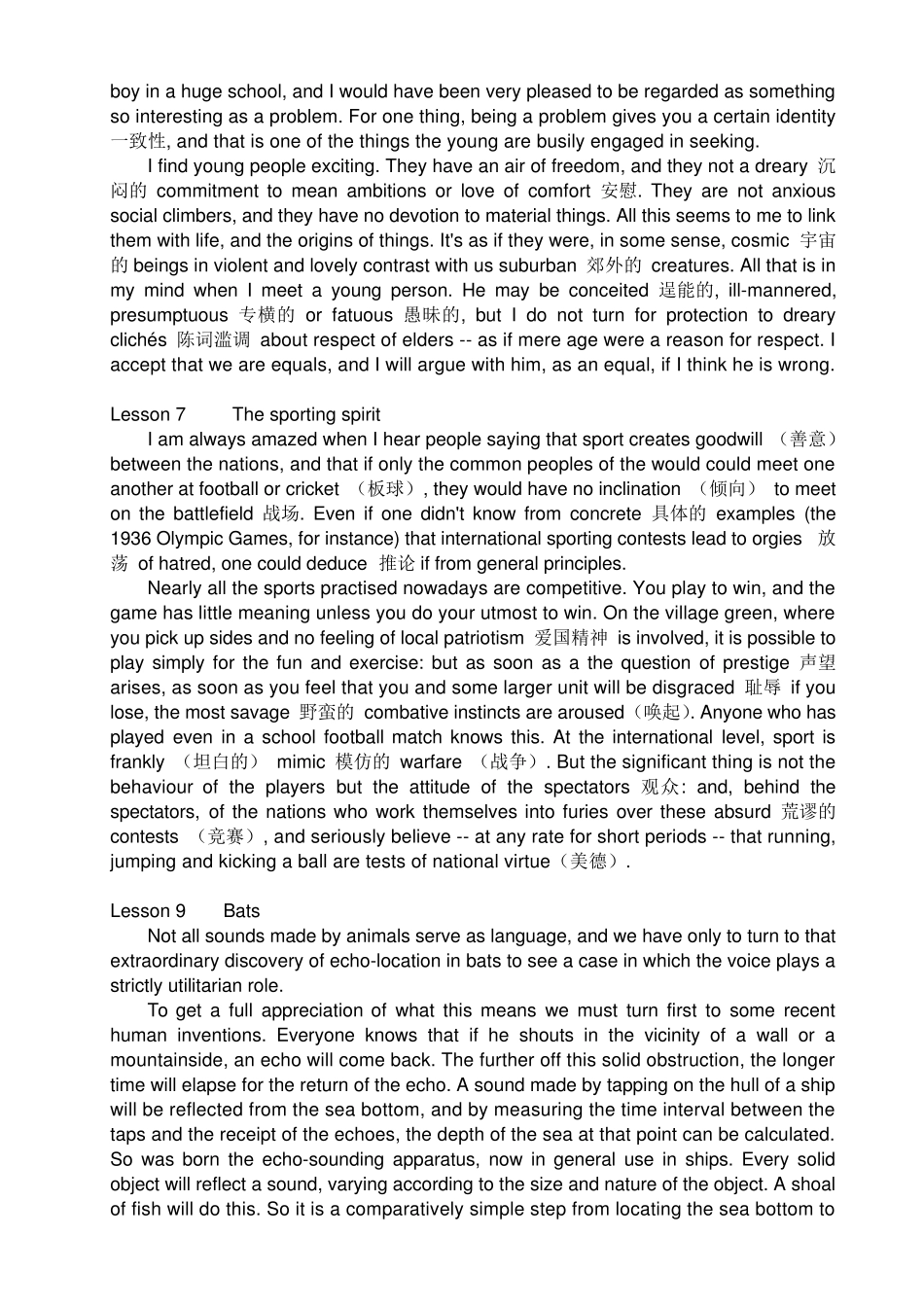Lesson 1 Finding fossil man (化石人) We can read of things that happened 5,000 years ago in the Near East, where people first learned to write. But there are some parts of the word where even now people cannot write. The only way that they can preserve (baocun) their history is to recount (叙述) it as sagas (传奇) -- legends handed down from one generation of another. These legends are useful because they can tell us something about migrations (移民) of people who lived long ago, but none could write down what they did. Anthropologists (人类学者) wondered where the remote ancestors of the Polynesian peoples now living in the Pacific Islands came from. The sagas of these people explain that some of them came from Indonesia (印尼) about 2,000 years ago. But the first people who were like ourselves lived so long ago that even their sagas, if they had any, are forgotten. So archaeologists (考古学家) have neither history nor legends to help them to find out where the first 'modern men' came from. Fortunately, however, ancient men made tools of stone, especially flint (打火石), because this is easier to shape than other kinds. They may also have used wood and skins, but these have rotted (腐烂) away. Stone does not decay (腐烂), and so the tools of long ago have remained when even the bones of the men who made them have disappeared without trace. Lesson 2 Spare that spider Why, you may wonder, should spiders be our friends? Because they destroy so many insects, and insects include some of the greatest enemies of the human race. Insects would make it impossible for us to live in the world; they would devour (吞吃) all our crops and kill our flocks and herds (牛羊), if it were no...


